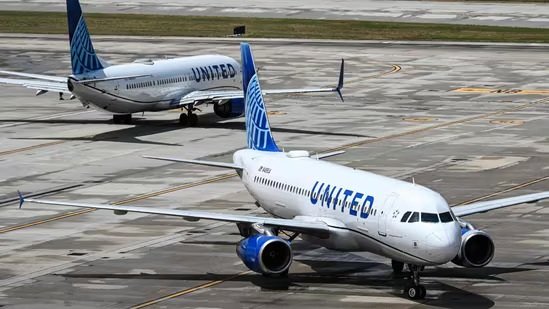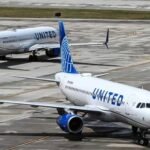United Airlines’ 2025 Technology Outage: A Wake-Up Call for Aviation Resilience
Introduction
On August 6, 2025, United Airlines faced one of the most disruptive technology failures in its history, grounding all its mainline flights in the United States. What began as a technical issue soon cascaded into a full-blown operational crisis, affecting thousands of passengers and drawing attention to the growing vulnerability of global aviation to IT infrastructure problems.
This article explores the incident in depth what caused it, how it unfolded, and what it reveals about the airline industry’s dependence on aging systems and third-party software. More importantly, it examines how carriers can evolve to ensure such disruptions become rarer and less catastrophic in the future.
- The Incident: What Happened?
Early in the morning, United Airlines’ operations began experiencing unusual system behavior. Within hours, the company made the unprecedented decision to ground all mainline flights across its network. This wasn’t due to weather, terrorism, or even a mechanical issue, it was a software failure.
The internal system affected was responsible for key operational functions including flight dispatch, crew scheduling, and weight and balance calculations. Without it, pilots and staff couldn’t legally or safely proceed with flights. The failure effectively froze United’s operations across the country.
The Federal Aviation Administration (FAA) issued a ground stop at United’s request, halting all its departures. The action affected hubs in Chicago, Houston, Denver, Newark, and San Francisco, among others. As the day unfolded, flight boards lit up with delays and cancellations, leaving travelers stranded and confused.
- Scope of Disruption
The scale of the disruption was staggering. By the end of the day:
- Over 1,000 United flights have been delayed.
- Approximately 200 flights were canceled outright.
- Operations were affected at nearly every major airport where United flies.
- International connections were disrupted because of the domestic turmoil.
While flights eventually resumed later that evening, the ripple effects extended into the following days, as aircraft and crew had to be repositioned, schedules had to be restructured, and frustrated customers had to be accommodated.
- Impact on Travelers
The passenger experience during the outage was, for many, infuriating and exhausting. Some passengers found themselves sitting on planes for hours with little to no communication. Others spent an entire day in terminal lounges without updates or support. At some airports, cooling systems failed on board aircraft as they idled on the tarmac, causing further discomfort.
Social media was flooded with accounts of disrupted family vacations, missed business meetings, and long waits with no food or assistance. Many customers expressed disbelief that a company of United’s size and technological resources could be brought to a halt by a single software failure.
This exposed not just technical vulnerabilities but also weaknesses in customer service protocols during crises.
- The Root Cause
Though initial rumors speculated about a possible cyberattack, United Airlines quickly clarified that the incident was not related to cybersecurity threats. The issue stemmed from a core internal system an older software platform that handles multiple aspects of flight operations.
At the heart of the failure was a critical dependence on a legacy system that had not been fully modernized. Additionally, a problematic third-party software update created compatibility issues that caused the system to fail. This triggered a domino effect that disrupted United’s ability to manage flights.
The software in question was deeply integrated into multiple aspects of United’s day-to-day operations. Because of this, when the system failed, there were no quick alternatives or redundant backups to take over.
- Why the Systems Failed
United’s issue is emblematic of a broader problem facing the airline industry: the continued use of outdated, inflexible, and highly customized software platforms. Many of these systems were developed decades ago and have been patched and upgraded repeatedly to adapt to modern demands.
The problem with such systems lies in their fragility. Even minor changes can cause major breakdowns. Furthermore, they often lack the modularity and cloud-based flexibility that modern systems possess, making real-time backups or failover solutions difficult to implement.
Adding to this, the use of external vendors for essential services like cybersecurity tools or dispatch modules means airlines often face “black box” failures where diagnosing and fixing issues requires coordination between multiple companies, sometimes in the middle of an operational emergency.
- The Recovery Effort
United’s IT and operations teams worked around the clock to bring systems back online. The recovery process involved rebooting tens of thousands of devices across airports and reestablishing secure connections to central databases. This was a time-consuming process, as many of the systems affected required manual resets and testing before operations could resume.
Flight crews were reassigned, airport operations were rescheduled, and customer service centers were overwhelmed with rebooking requests. Though the airline managed to restore service by the evening, the backlog persisted into the next day and beyond.
United offered compensation in the form of travel vouchers, hotel accommodations for stranded passengers, and waived change fees for affected flights. However, for many, the disruption has already caused missed vacations, canceled meetings, and personal hardships that couldn’t be undone.
- Financial Consequences
The financial impact of the outage was significant. United faced:
- Revenue losses due to flight cancellations and refunds.
- Increased operating costs to accommodate delayed passengers.
- Reputational damage could affect future bookings.
- Potential penalties from regulators or lawsuits from disgruntled customers.
Analysts estimate the outage could cost the airline between $100 million and $200 million in direct and indirect losses. Investor confidence also took a hit, with United’s stock dipping shortly after the incident.
- Operational Lessons Learned
This crisis highlighted several critical vulnerabilities not just for United Airlines, but for industry as a whole:
- a) Overreliance on Legacy Systems
Many airlines still depend on software built in the 1980s and 1990s. These systems, though reliable in the past, are increasingly unable to meet the demands of today’s high-volume, globalized operations.
- b) Lack of System Redundancy
Airlines need robust fallback systems that can take over in the event of primary system failure. Redundancy isn’t just a luxury it’s a necessity in modern aviation.
- c) Vendor Risk Management
Third-party providers play a growing role in airline IT systems. Companies must develop better oversight and contingency planning to mitigate risks associated with vendor failures.
- d) Crisis Communication
Customers need timely, transparent updates during disruptions. Communication protocols must be streamlined and empowered at all levels to respond rapidly.
- The Broader Industry Context
United is not the first major airline to suffer a debilitating IT failure. In recent years, several carriers including British Airways, Southwest Airlines, and Delta have had similar meltdowns due to aging infrastructure or flawed software updates.
Even the FAA itself suffered a major outage in 2023 that halted flights nationwide due to a corrupted database file. These incidents show that even the most sophisticated and regulated sectors are not immune to the challenges of digital dependency.
As aviation continues to digitize, the risks associated with software vulnerabilities grow. From booking systems to engine monitoring, nearly every part of the passenger journey relies on IT infrastructure.
- What Needs to Change
In the aftermath of the United outage, there are clear steps that airlines and regulators should take to reduce the likelihood and severity of future incidents:
- a) Modernization of Core Systems
Airlines must invest in replacing legacy platforms with cloud-based, modular, and scalable systems that offer real-time backups and stronger reliability.
- b) Cross-Functional Testing
IT updates must be tested across all systems, not just in isolated environments. Simulation of failure scenarios should be a regular part of system maintenance.
- c) Better Incident Response
Airlines need clear, pre-approved protocols for how to respond to tech crises including who communicates what, when, and how so responses are not improvised under pressure.
- d) Regulatory Standards
Governments and aviation authorities could implement minimum standards for IT resilience, requiring airlines to demonstrate system redundancy and contingency capabilities.
- e) Increased Investment in IT Talent
Just as airlines invest in pilot training and aircraft maintenance, they must prioritize hiring and retaining top-tier IT professionals with expertise in aviation systems.
- A Turning Point for United?
This crisis may serve as a turning point for United Airlines. The incident has likely accelerated internal discussions around infrastructure investment, digital transformation, and customer recovery strategies.
If United takes this opportunity to build more resilient systems and restore customer trust, it can emerge stronger. But if not, the cost of future failures, both financial and reputation, could be much higher.
Conclusion
The August 2025 technology failure at United Airlines was not just a one-off glitch it was a stark warning about the fragility of modern air travel in an age of increasing digital dependence. It highlighted systemic weaknesses that, if not addressed, could lead to even greater disruptions in the future.
As aviation moves forward, carriers must balance efficiency and innovation with stability and preparedness. United’s outage reminds us that in an industry where timing, safety, and customer trust are paramount, technology is not just a tool it is the foundation.
Without reliable systems, planes don’t fly. And when planes don’t fly, the world stops moving.






